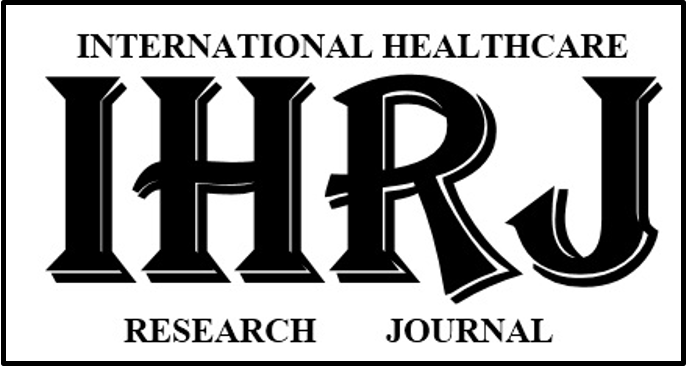The Relationship Between Maxillary and Mandibular Base Lengths and Dental Crowding in Patients with True Class II Malocclusions
Abstract
INTRODUCTION: Orthodontists, for a long time have considered that occlusion and facial beauty are so interdependent that they must be equal goals of treatment.
AIM: To validate the relationship between maxillary and mandibular effective lengths and dental crowding in patients with Class II malocclusions.
MATERIALS AND METHOD: A sample of 40 orthodontic patients with complete bilateral Class II malocclusions in the permanent dentition (25 males, 15 females) who were divided into two groups based on severity of pre-treatment mandibular anterior dental crowding. The maxillary and mandibular effective lengths and tooth-arch size discrepancies were measured on the pre-treatment Lateral cephalograms and initial casts, respectively. Intergroup comparisons of apical base lengths were assessed with independent t-tests. Correlation between effective length and dental crowding was assessed by Pearson's correlation coefficient (P <.05).
RESULTS: Subjects with Class II malocclusion and moderate to severe crowding had significantly smaller maxillary and mandibular effective lengths compared with subjects without crowding and with minimal dental crowding. A weak inverse correlation was also found between maxillary and mandibular effective lengths and the severity of dental crowding.
CONCLUSION: In patients with complete Class II malocclusion, decreased maxillary and mandibular effective lengths constitute a significant factor associated with dental crowding.
Downloads
References
Sakuda M, Kuroda Y, Wada K, Matsumoto M. Changes in crowding of teeth during adolescence and their relation to the growth of the facial skeleton. Trans Eur Orthod Soc. 1976:93–104.
Leighton BC, Hunter WS. Relationship between lower arch spacing/crowding and facial height and depth. AJODO 1982;82(5):418-25. https://doi.org/10.1016/0002-9416(82)90191-9
Richardson ME. The etiology of late lower arch crowding alternative to mesially directed forces: a review. American Journal of Orthodontics and Dentofacial Orthopedics. 1994;105(6):592-7.
Björk A, Palling M. Adolescent age changes in sagittal jaw relation, alveolar prognathy, and incisal inclination. Acta odontologica Scandinavica 1955; 12(3-4):201–32.
Richardson ME. A review of changes in lower arch alignment from seven to fifty years. Semin Orthod. 1999;5:151–9.
Sampson WJ, Richards LC. Prediction of mandibular incisor and canine crowding changes in the mixed dentition. Am J Orthod. 1985;88:47–63.
Sayin MO, Turkkahraman H. Factors contributing to mandibular anterior crowding in the early mixed dentition. Angle Orthod 2004;74:754–8.
Radnzic D. Dental crowding and its relationship to mesiodistal crown diameters and arch dimensions. Am J Orthod Dentofacial Orthop 1988;94:50–6.
Bernabe E, Flores-Mir C. Dental morphology and crowding. A multivariate approach. Angle Orthod 2006;76:20–5
Sanin C, Savara BS. Factors that affect the alignment of the mandibular incisors: a longitudinal study. Am J Orthod 1973;64:248–57.
Bernabe E, del Castillo CE, Flores-Mir C. Intra-arch occlusal indicators of crowding in the permanent dentition. Am J Orthod Dentofacial Orthop. 2005;128(2):220–5.
Howe RP, McNamara JA, O'Connor KA. An examination of dental crowding and its relationship to tooth size and arch dimension. Am J Orthod Dentofacial Orthop 1983;83:363–73.
Shigenobu N, Hisano M, Shima S, Matsubara N, Soma K. Patterns of dental crowding in the lower arch and contributing factors. A statistical study. Angle Orthod 2007;77(2):303–10.
Lundstrom A. The etiology of crowding of teeth (based on studies of twins and on morphological investigations) and its bearing on orthodontic treatment (expansion or extraction). Trrans Eur Orthod Soc 1951:176–89.
Hooten EA. Up from the ape, New York. The Macmillan Company. 1947
Barber TK. The crowded arches. J South Calif Dent Assoc. 1967;35: 232–40.
Doris JM, Bernard BW, Kuftinec MM, Stom D. A biometric study of tooth size and dental crowding. Am J Orthod. 1981;79: 326–336.
Puri N, Pradhan L, Chandna A, Sehgal V, Gupta R. Biometric study of tooth size in normal, crowded, and spaced permanent dentitions. Am J Orthod Dentofacial Orthop. 2007 Sep;132(3):279.e7-14.
Janson G, Goizueta OEFM, Garib DG, Janson M. Relationship between maxillary and mandibular base lengths and dental crowding in patients with complete class II malocclusions. The Angle Orthodontist 2011; 81(2):217-21.
Khoja A, Fida M, Sheikh A. Association of maxillary and mandibular base lengths with dental crowding in different skeletal malocclusions; J Ayub Med Coll Abbottabad. 2014;26(6):428-33.
Berg R. Crowding of the dental arches : a longitudinal study of the age period between 6 and 12 years. Eur J Orthod. 1986:8; 43-9.
Ani GS, Babu EC and Soman PS. Assessment of dental crowding. Int J Appl Basic Med Res. 2014:4(1):52-5.

Copyright (c) 2020 Tenzin Palkit et al.

This work is licensed under a Creative Commons Attribution-NonCommercial 4.0 International License.


